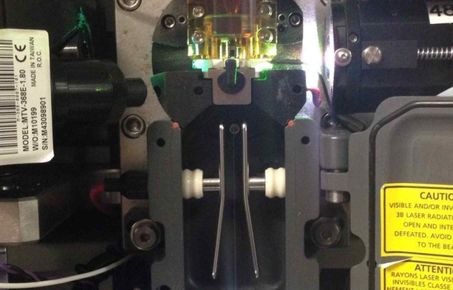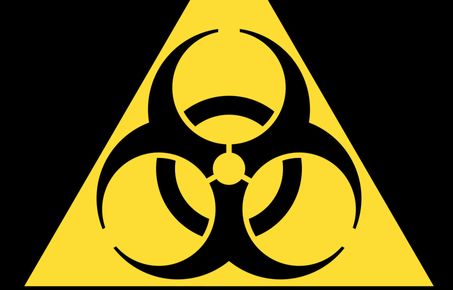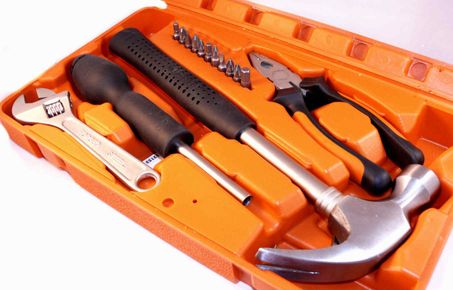Requesting a sort
New users should follow these steps to request sorting:
- Create an account on PPMS FLOW_SAFB
- Once your account is approved, create a financial account (orders won’t be received until a valid financial account is set up). Click ‘Profile’ - ‘New account authorization request’
- Request to join the Facility Biosafety Database. Upload an approved Bio1 form and SOP if you intend to analyse unfixed CONTAINMENT LEVEL 2 (CL2) SAMPLES (HG2 pathogens. GM Class II organisms, human cells).
- Create a sort order for CL1_Aria or CL2_Aria depending on the Containment level of your sample. Melody sortings do not require a sort order.
Information to provide in sort order
Users will provide information on:
- Fluorochromes/Fluorescent Proteins being used,
- Cell type,
- Gating and sorting strategy. If you have performed this experiment before, write the name of the archive from your last sorting.
- Approximate number of cells in the sample (if known),
- Number and percentage of positive cells to be sorted (if known),
- Type of cell collection – number of populations to sort, bulk or single-cell sorting
- Type of collection device – 1.5mL Eppendorfs, 5mL tubes, 15mL tubes, cell culture plates or slides,
- Does the sample need to be chilled or heated?
- Is purity check required?
- Is a long pre-sort clean required? Recommended if culturing cells post-sorting or extracting RNA.
- Other - RNase provided to clean sort chamber, clean sample line with 96% EtOH, etc.
The staff at the SK Flow Cytometry Facility will then contact users to discuss a day and allocated time to preform the sorting.
Please note that sorts for unfixed bacteria, yeast and fungus will be charged a post-cleaning service.
Items to bring to your session
Please be on time for your booking. If you are over 30 min late for the session, you will still be charged for the time booked.
- Filtered sample in Sort Preparation Buffer at a concentration of up to 10 million per mL - in a tube. Minimum volume 0.5mL
- Unstained sample. Minimum volume 0.2mL.
- Single colour controls for each fluorophore used (approx. half a million). Minimum volume 0.2mL.
- Other controls i.e. Isotypes, FMOs, live/dead cell stains. Minimum volume 0.2mL.
- Collection tube/plate/slide/dish with or without Sort Collection Buffer added.
- Extra Sort Preparation Buffer to dilute samples if needed.
- Extra Sort Collection Buffer.
| Control | Description |
|---|---|
| Unstained/untrasfected | This control should have gone through the same procedure as your other samples but without the addition of fluorophore. |
| Compensation (single colour) controls for each fluorophore |
For setting compensation between conflicting fluorophores. Single-colour beads or cells (negative and positive in the same tube if possible). These controls need to be at least as bright as your brightest sample. |
|
Fluorescence Minus One (FMO) controls for each fluorophore (recommended) |
For setting gates through the absence of one fluorophore. Beads or cells with all fluorophores except one added. |
| Positive control (recommended) | If antibody is new, can use for example a cell line expressing that marker. |
|
Isotype (optional) |
These controls are optional and should only be considered as an indication of non-specific binding. They need to be matched to the host species and isotype of your primary antibody.
They should be used at the same concentration as your antibody. |
| If you do not have the proper controls for your sort, we will highlight there is no guarantee regarding the outcome of the sort during your session. | |
What are 5mL Falcon tubes and how to purchase them?
5ml Falcon Tubes are made by Beckton Dickinson BD:
- Sterile tubes with lids, Cat. Num. 352054.
- Non-sterile tubes (without lids), Cat. Num. 340345.
- 35µm Filter top tubes, Cat. Num. 352235.
Filtration and dislodging of samples can also be done with cell strainers less than 70µm.
| Up to 4-population simultaneous sorting | Up to 2-population simultaneous sorting | Single cell sorting | Single cell sorting |
|---|---|---|---|
| Tubes | Tubes | Plates | Slides |
| 5mL Falcon | 15mL Falcon | 6 wells | Standard |
| 1.5mL Eppendorf | 24 wells | Frosted end | |
| 48 wells | |||
| 96 wells (incl. PCR) | |||
| 384 wells |
Sort Preparation Buffer
A good sort buffer is as follows:
- 1 X PBS
- 1mM EDTA or 10U/mL DNAse
- 25mM Hepes pH7.0
- 1% FBS (heat inactivated)
Cells can also be brought in 1 X PBS or media but only up to 2% FCS/Serum and no growth factors to avoid clumping of cells.
Sort Collection Buffer
Any buffer is allowed for sorting into, except Trizol due to aerosol danger. Please be aware of the dilution factor – particularly when it comes to reagents such as RNA later. Discuss your concerns with the facility staff.
Time to sort
This depends on the quality and concentration of the sample as well as the size of the cells within. Once the sample is running and the flow rate to get a good sorting efficiency is observed, an approximate time will be given.
Please see below for time required to sort a certain population percentage.
| Required number | Desired particles as % of total particles | Desired particles as % of total particles | Desired particles as % of total particles | Desired particles as % of total particles |
|---|---|---|---|---|
| 0.1% | 1.0% | 5.0% | 50% | |
| 103 | 8.3 min | 50 sec | 10 sec | 1 sec |
| 104 | 1.4 hr | 8.3 min | 1.7 min | 10 sec |
| 105 | 14 hr | 1.4 hr | 17 min | 1.7 min |
| 106 | 5.8 d | 14 hr | 2.8 hr | 17 min |
| 107 | 1.9 mo | 5.8 d | 1.2 d | 2.8 hr |
| 108 | 1.6 yr | 1.9 mo | 12 d | 1.2 d |
Postgraduate research
Interested in studying a PhD at the Department of Life Sciences? Find out more about postgraduate research opportunties.


